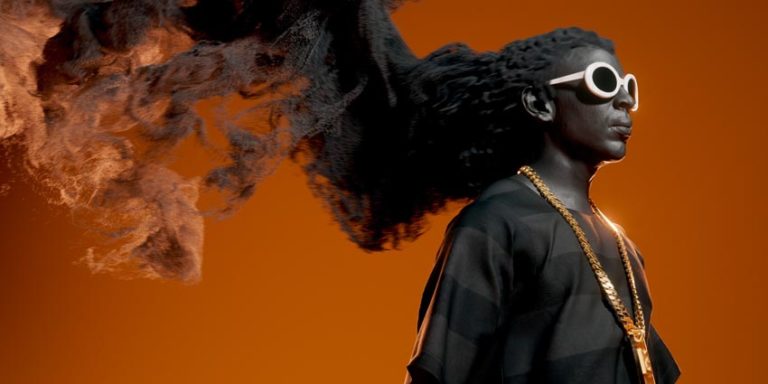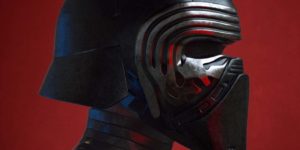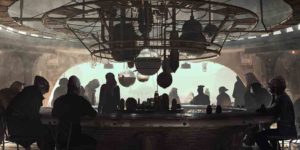Introduction
In this exclusive interview, we embark on a journey through the expansive world of digital artistry with the accomplished 3D artist, Moises Gomes. From his roots in traditional sculpture and drawing to a dynamic career spanning 14 years in computer graphics, Moises shares insights into his influences, creative process, and the evolution of his distinctive style.
Inspired by the stories of fellow Brazilians who made a mark in the industry, Moises delves into the challenges and achievements that have defined his artistic path.
Join us as we explore two captivating projects, “Tlaloc” and “Afro Power,” unraveling the stories, techniques, and intricacies that make Moises Gomes a visionary force in the world of digital art.
Background and Inspiration
Can you tell us a bit about your journey into digital art?
My journey into the arts began with sculpture and drawing. In my younger years, my goal was to work with traditional sculpture in Hollywood films. However, based on the advice of one of my professors, I decided to shift towards computer graphics. The decision was influenced by the industry’s shift towards a more technological landscape, providing me with greater job opportunities. Additionally, the realm of computer graphics allowed me to express my art in different ways, utilizing various types of media.
Since then, I’ve been immersed in this field for 14 years, and I am incredibly grateful for how it has changed my life.
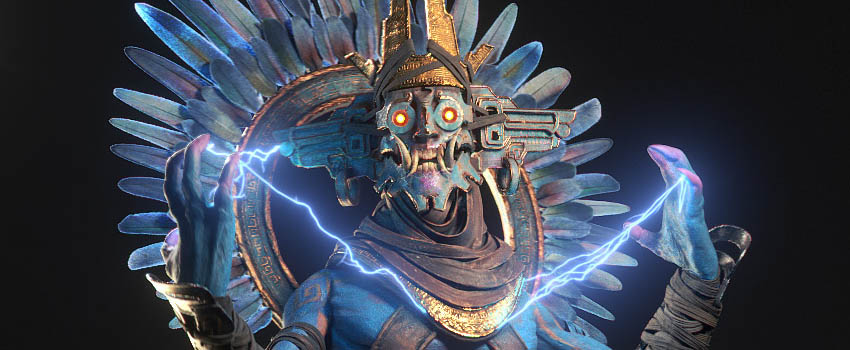
What inspired you to become a digital artist?
I was deeply influenced by the work of two notable Brazilians: Alex Oliver, who served as my mentor in digital sculpture, and Fausto de Martini, who dedicated many years to Blizzard. At that time, it was rare to see Brazilians being hired by computer graphics companies in the United States; only exceptional individuals achieved this feat. Witnessing their stories provided me with significant inspiration to become a better artist. Of course, over the years, I’ve gathered various other references from artists not only in Brazil, but these two were the ones who motivated me the most at the beginning of my journey.
Who are some of your artistic influences and favorite artists?
Throughout my journey, many individuals have inspired me. In addition to Alex Oliver and Fausto de Martini, I’ve been deeply influenced by graffiti artists “Os Gemeos,” Marco Di Luca, Glaco Longui, Vitali Bulgarov, Cicero D’ávila, Rafael Grasseti, Andre Holzmeister, Rafael Souza, among many others. Each of these individuals has uniquely contributed to my path, shaping my perspective and propelling my growth as an artist.
Creative Process
Could you describe your typical creative process from ideation to completion?
It is my daily habit to seek references in various forms of art, ranging from photographs, digital art, street art, art direction, design, and paintings. I constantly look for elements that I find interesting and that contribute to enriching my style. As a result, even though my portfolio is more focused on character production, it encompasses a diverse range of styles.
I gather references in various ways, saving them on social media and my computer. When embarking on a project, whether it’s personal or for a client, I leverage this extensive foundation of references to construct and enhance my projects. In general, the most important part is to define the idea, research, and start my production process.
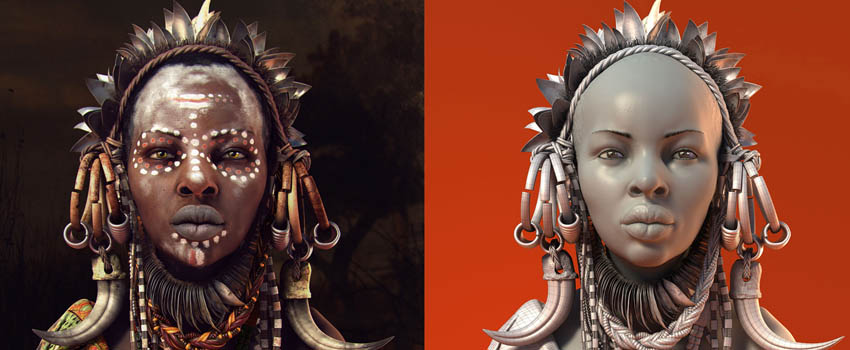
Do you have any favorite software, tools, or techniques that you rely on in your work?
Yes, I have some favorite software, but this has evolved over time. One thing I really enjoy doing, even though I’m not sure if it’s good or bad, is experimenting with new ways of production. I’ve had experience working with the majority of widely used software in the market (Zbrush, 3Dmax, Maya, Houdini, C4D, Vray, Arnold, Redshift, Substance, Mari, etc.).
Nowadays, I particularly enjoy working with Houdini, Redshift, Substance Painter, 3D max/Maya, and Nuke. I am more dedicated to reducing the number of software tools and becoming more focused on Houdini, as it’s the most incredible tool I’ve had the opportunity to work with, but this will still take some time.
How do you stay motivated and overcome creative blocks?
Dealing with creative blocks is a complex matter, as these phases are quite common in our line of work. I believe my advantage in this scenario lies in having a profile more focused on execution than creation. For this reason, on some days, I just need to sit in front of my computer and carry out tasks that are more technical or already defined. In general, I advise against forcing yourself to produce something during these moments. Instead, take a break from the project, read something, engage in sports, and explore references in other areas that bring you joy or inspiration. Sooner or later, your brain will find a way back and overcome the creative block.
Style and Themes
Many digital artists have a unique style. How would you describe your artistic style and the themes you often explore in your work?
I don’t consider myself an artist with a single style, especially given my more generalist profile, but there are certain aspects of production that I find particularly engaging. Overall, I have a strong affinity for projects that present challenges. Many times, I’ve initiated personal projects without the slightest idea of how I would achieve the final result. Surprisingly, these turned out to be the projects that brought me the most returns, driving both my artistic and personal evolution. Regarding modeling, I don’t adhere to a very defined style, but when it comes to rendering and finalizing my projects, I have a significant preference for realism.
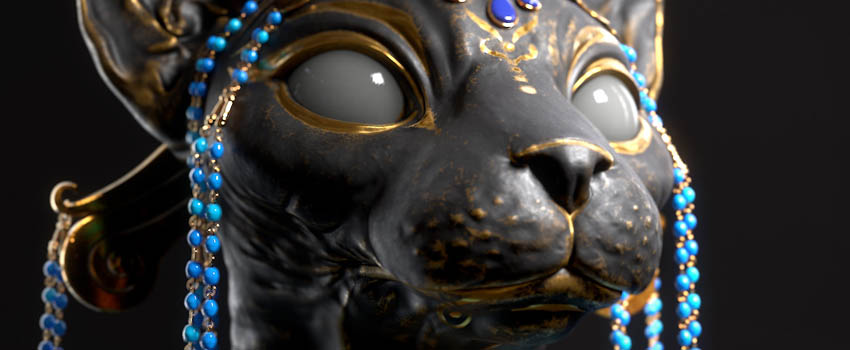
Is there a recurring message or story you try to convey through your designs?
My latest personal project, named Tlaloc, serves as a good example of the response I provided above. I became enamored with the concept by the talented artist Gianluca Rolli, yet simultaneously recognized it as a substantial undertaking, filled with intricate processes and challenges in execution. Delving deeper into the character’s background, I found myself captivated by the story surrounding this Aztec deity. This motivation led me to explore not only the conceptual aspects but also production techniques to achieve the best possible outcome.
Ultimately, this project is likely the one that has brought me the most recognition, not only for its execution and production aspects but primarily because the character possesses a rich backstory, making it believable and engaging for the audience.
Afro Power
Let’s dive into a specific project of yours. Can you share some details of the Afro Power?
Afro Power is a project that I hold in high regard, not only for the design and the sense of power I was able to convey technically but also because it has been a very enriching experience for me. Within the same project, I faced various technical challenges, from modeling and lighting to fabric simulations, smoke, particles, chains, rendering, and composition. Undoubtedly, this journey has played a crucial role in making me a more complete and confident artist.
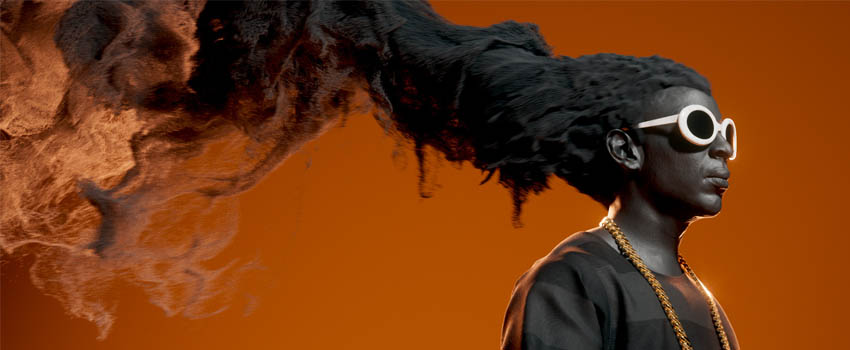
What is the story behind this project?
Afro Power originated from my daily research for references. I came across a photograph and a conceptual idea on two separate platforms (Pinterest and Instagram). Consequently, I decided to merge these two artworks, as I found both images to be powerful representations of Black strength and beauty. Moreover, the design and color contrast in my mind resonated exceptionally well, encapsulating the essence I wanted to convey.
Can you describe the key elements and techniques used in this project?
Yes, I had created the character’s modeling some time ago as part of an anatomy study. Since I already had the model and was pleased with the final result, I proceeded with retopology and turned the geometry into an animation. As I don’t have expertise in rigging and animation, I used Mixamo for the character animation. For all the effects, I employed Houdini, believing it to be one of the great advantages of this incredible tool.
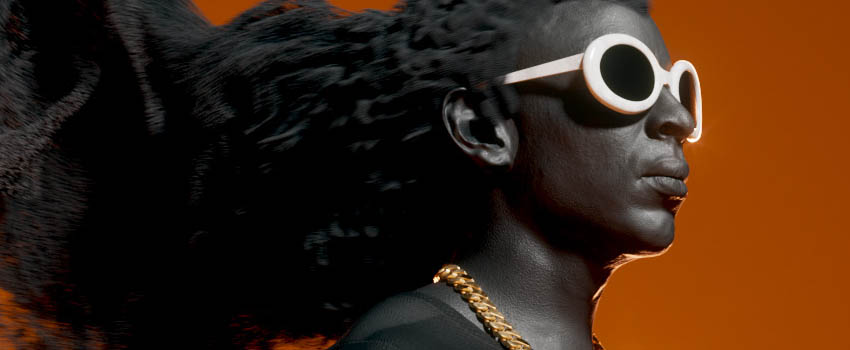
I managed to solve all the technical aspects of production using PyroSolver, Vellum, and Particles. The most challenging aspect was dealing with the chain, as I had to research how to create repetitions of a Cuban chain in a way that allowed for a procedural assembly of this asset. After that, I adjusted the geometry to collide realistically with the body and fabric. In the end, I was very pleased with the result.
Challenges and Achievements
Every artist faces challenges. Can you tell us about a specific artistic challenge you’ve overcome and how you did it?
Regarding challenges, as I mentioned above, all my personal projects have been both personal and professional challenges. One of the key considerations for this type of project is to completely take me out of my comfort zone, whether it involves tackling a highly complex concept or adopting an entirely new workflow, and sometimes, a combination of both.
On the professional front, I’ve faced some incredible project management challenges. This ranged from being the technical lead and handling all the special effects for a project with a major client to building a production department from scratch and managing teams in the last company I worked for.
What’s been one of your most significant achievements or milestones in your artistic journey?
Overall, I am deeply grateful for all the opportunities I’ve had in my professional journey. In particular, I take great pride in being featured in every major computer graphics magazine worldwide, including 3D World, 3D Artist Magazine 52, 3D Creative Magazine 59, and Colors Magazine.
Additionally, I’ve received recognition on some of the largest computer graphics portals globally. However, beyond these accomplishments, I believe the most incredible aspect throughout these years has been the chance to meet and become friends with remarkable individuals and renowned artists. That is truly priceless.
Advice for Aspiring Artists
What advice do you have for aspiring digital artists just starting their creative journey?
I have three pieces of advice for anyone aspiring to be a digital artist:
- Prioritize your health, both mentally and physically. Without it, you won’t be able to perform your tasks with quality and intensity.
- Work hard and set clear goals for yourself. Continue until you achieve them. Sometimes, reaching exactly where you want may not be possible, but the journey to your goal will undoubtedly provide valuable learning and experience. Additionally, connect with people who have already achieved what you aspire to in the future.
- More important than being an exceptional professional is being a good person. While companies have their goals and you are there to contribute to their success, at the end of the day, what really matters are the friendships and partnerships you have built and how people will remember you after you stop working together.
How do you balance your artistic pursuits with other aspects of life, like work and family?
I believe that balance depends a lot on the life stage you’re going through. There will be periods where working more is necessary and others where it won’t be as demanding. In my view, the key is to dedicate quality time to whatever you’re doing. When you’re with your family, be fully present, and the same applies when you’re working or having fun. This will not only help you mentally but also garner more respect from those around you.
Future Goals
What are your future artistic goals, or is there a particular project or theme you’d like to explore in the future?
Currently, I am involved in some personal projects, with the first and most significant one being the investment in my international career. After having worked for a considerable time in incredible companies in Brazil and as a remote freelancer for some abroad, I have been actively dedicated to establishing new partnerships in different parts of the world, both as a freelancer and in fixed-job opportunities. This endeavor has been challenging and exciting. Additionally, I am committed to the ongoing update of my website, Demo Reel, personal projects, and social media presence.
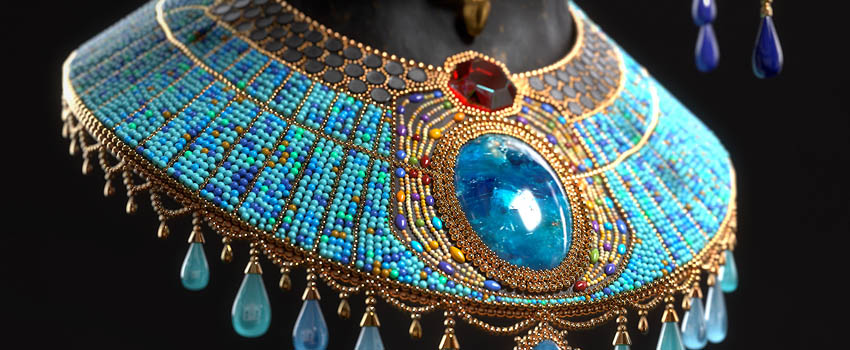
Do you have any upcoming exhibitions, collaborations, or projects you’d like to share with your audience?
Currently, I am working on the reconstruction of a personal project I completed exactly 10 years ago. The goal of this work is to apply everything I have learned over the past years to better understand the extent of my evolution during this period. Moreover, this project holds special significance for me as it was an image that opened up many opportunities in my career.
Conclusion
As we conclude this enlightening interview, we’ve delved into the remarkable journey of Moises Gomes, a 3D artist whose fusion of traditional artistry and technological prowess has crafted a unique narrative.
From the profound impact of influential Brazilians to the dynamic challenges of personal projects like “Tlaloc” and “Afro Power,” Moises showcases not only his technical prowess but also his commitment to continuous evolution.
With a wealth of achievements, including features in major computer graphics magazines and global recognition, Moises Gomes stands at the intersection of art and technology. As he looks ahead to new international opportunities and the reconstruction of a pivotal project from a decade ago, the future promises exciting ventures from this visionary artist.
For real-time updates and glimpses into his creative process, be sure to follow him on Instagram. Don’t forget to visit his website at www.moisesgomes.com and explore his Artstation profile.
Nyx, General Manager and Editor at Vertex Mode, is a seasoned 3D Artist in gaming and film, sharing insights on Digital Art and its creators.
